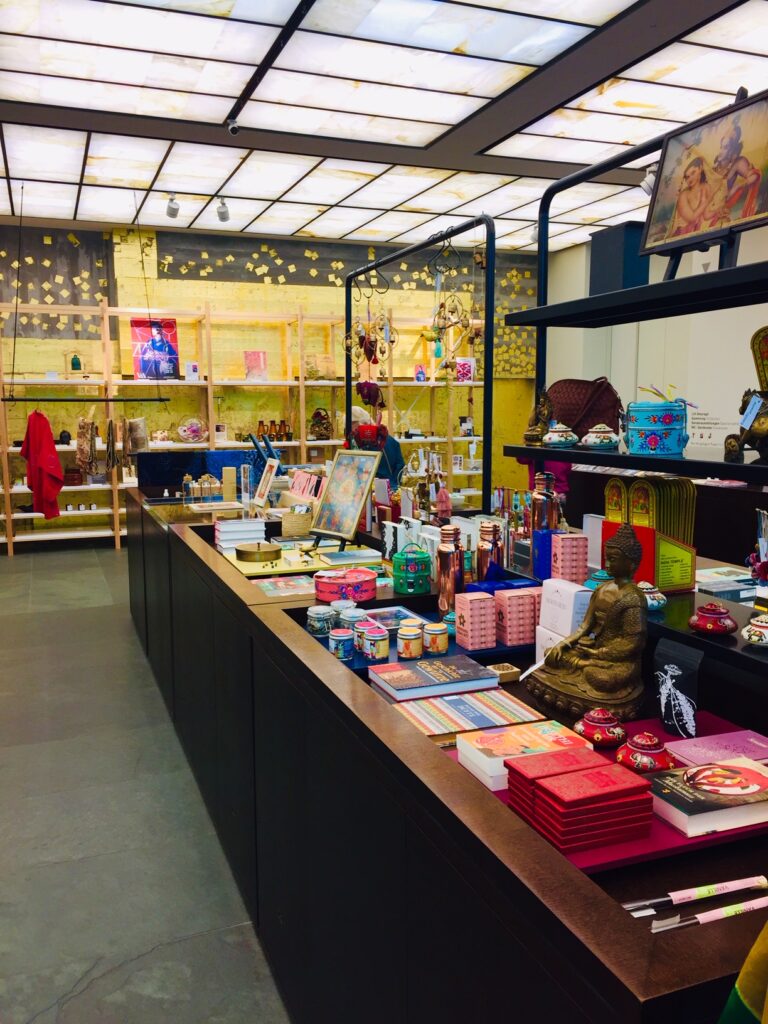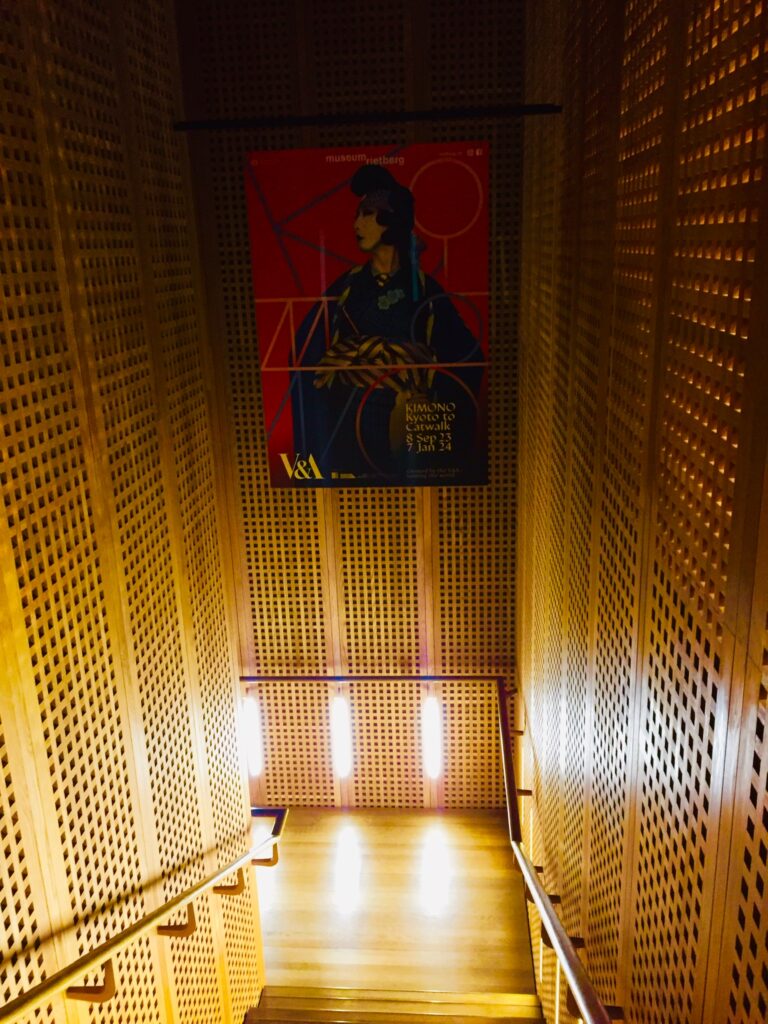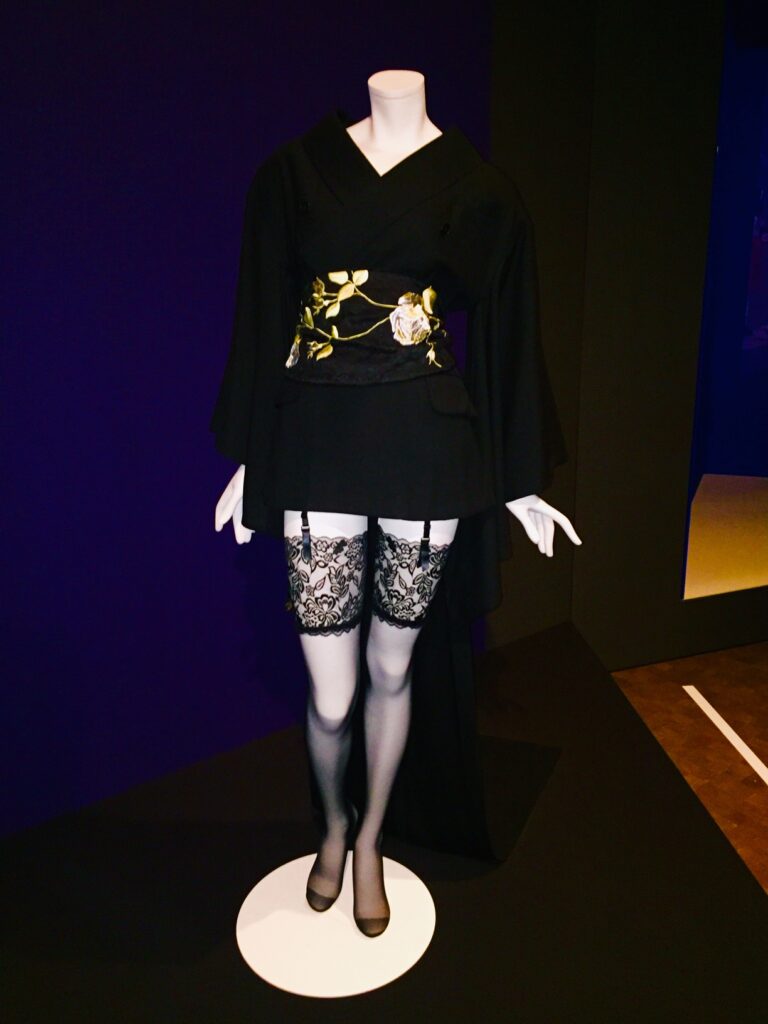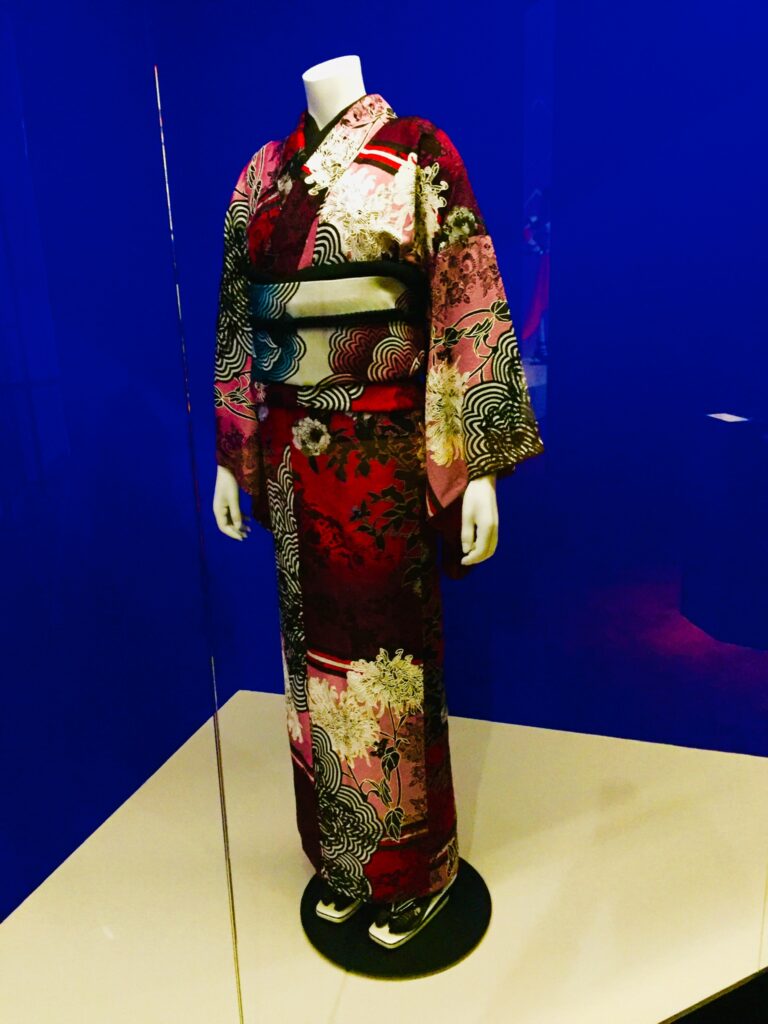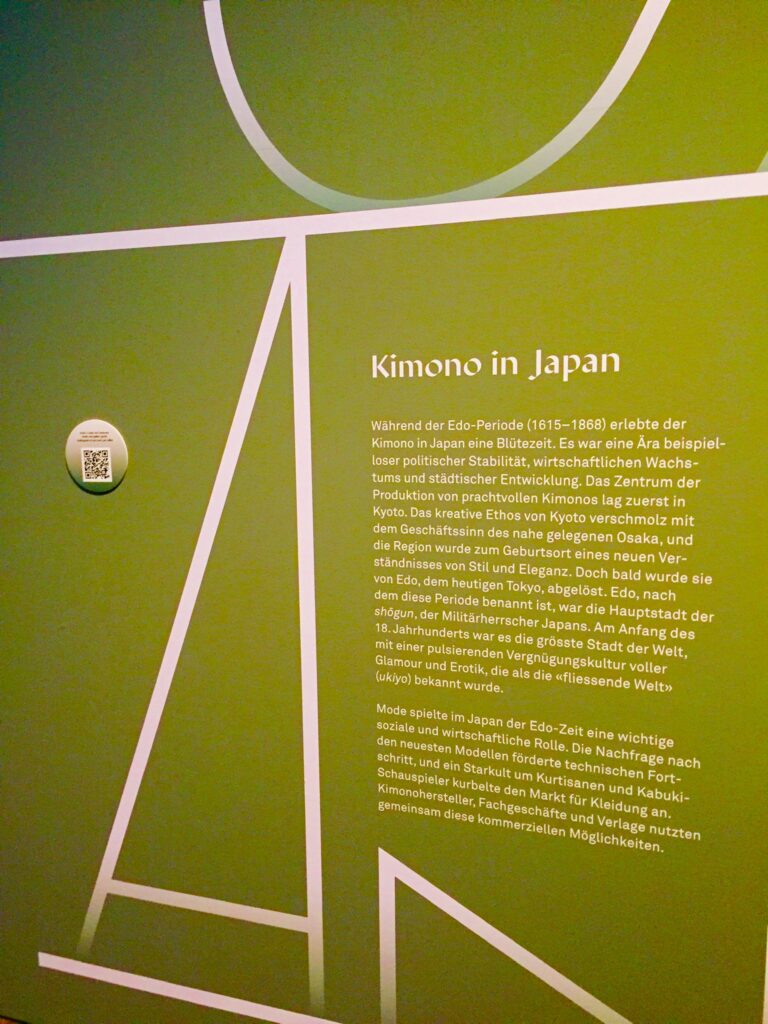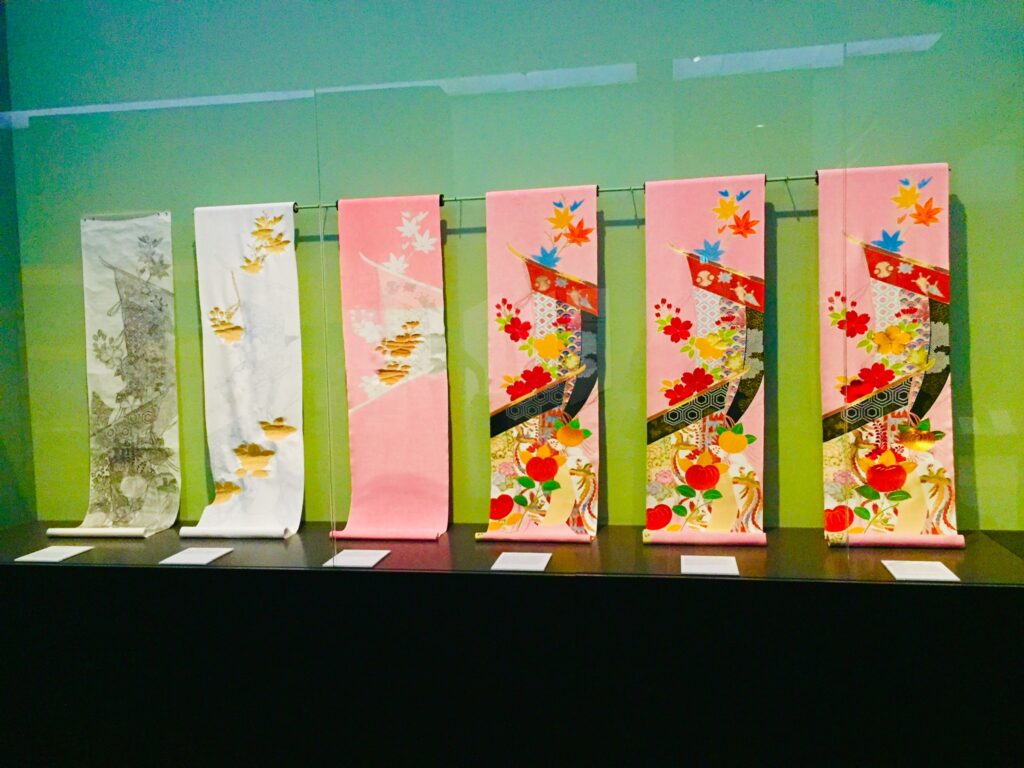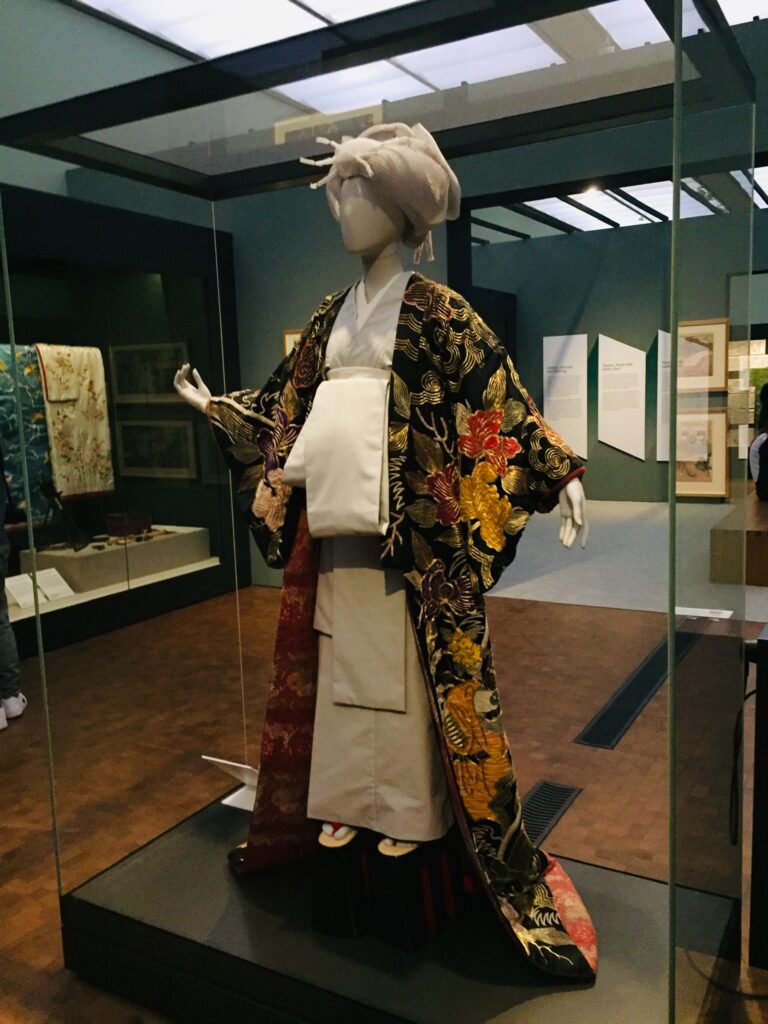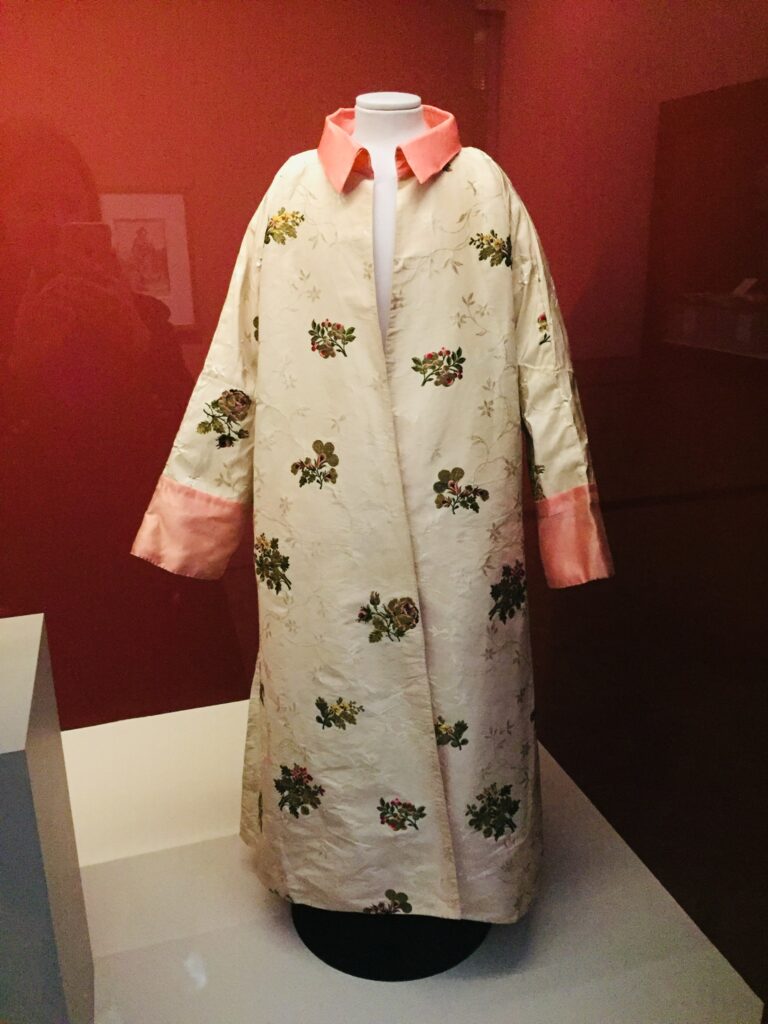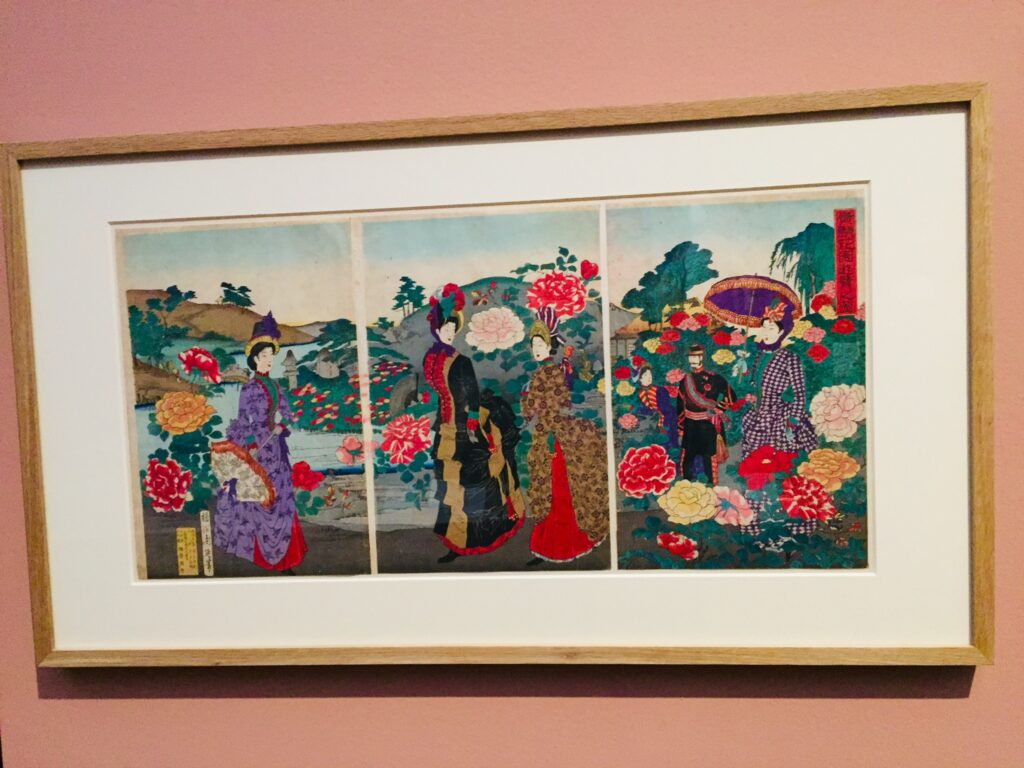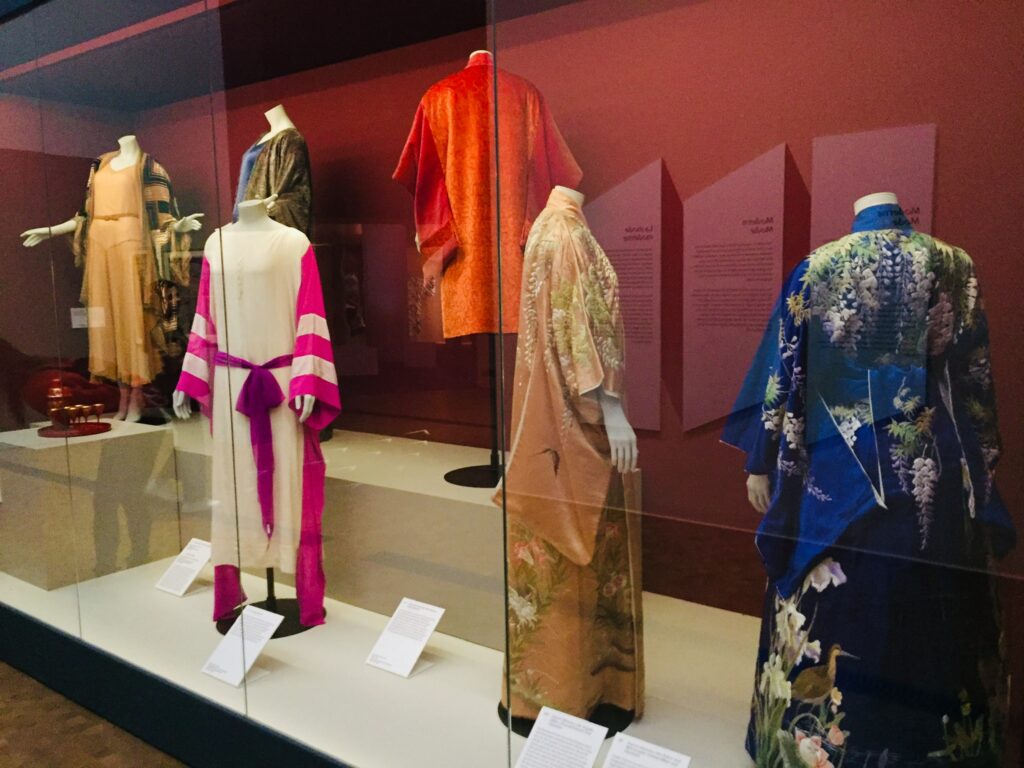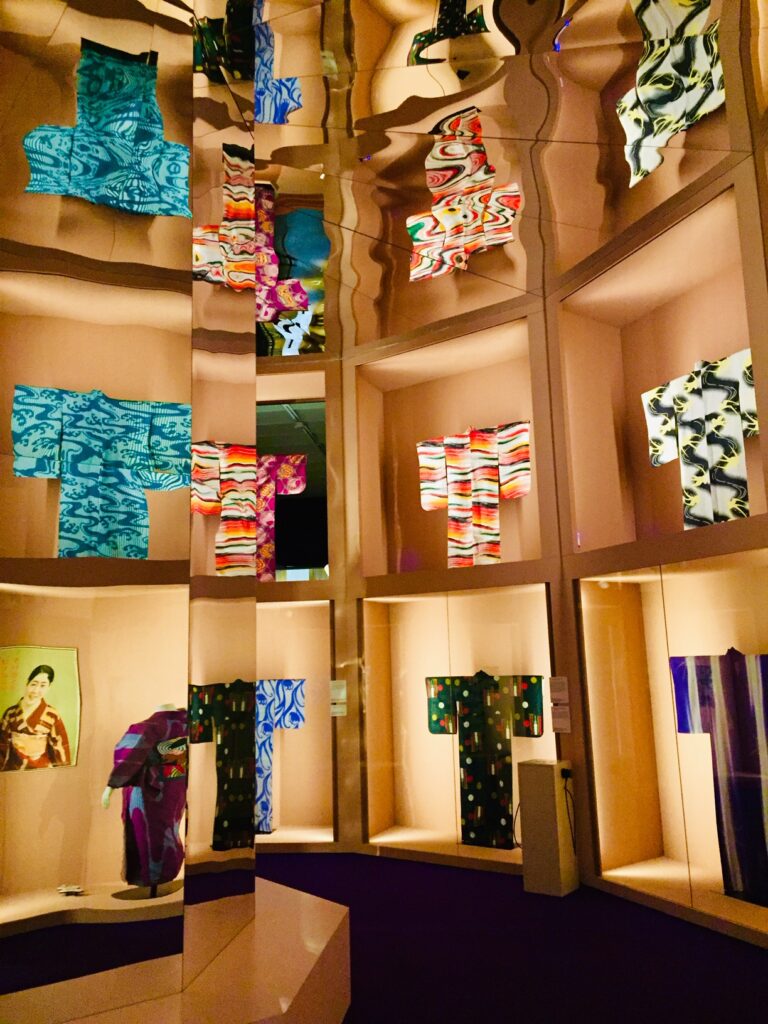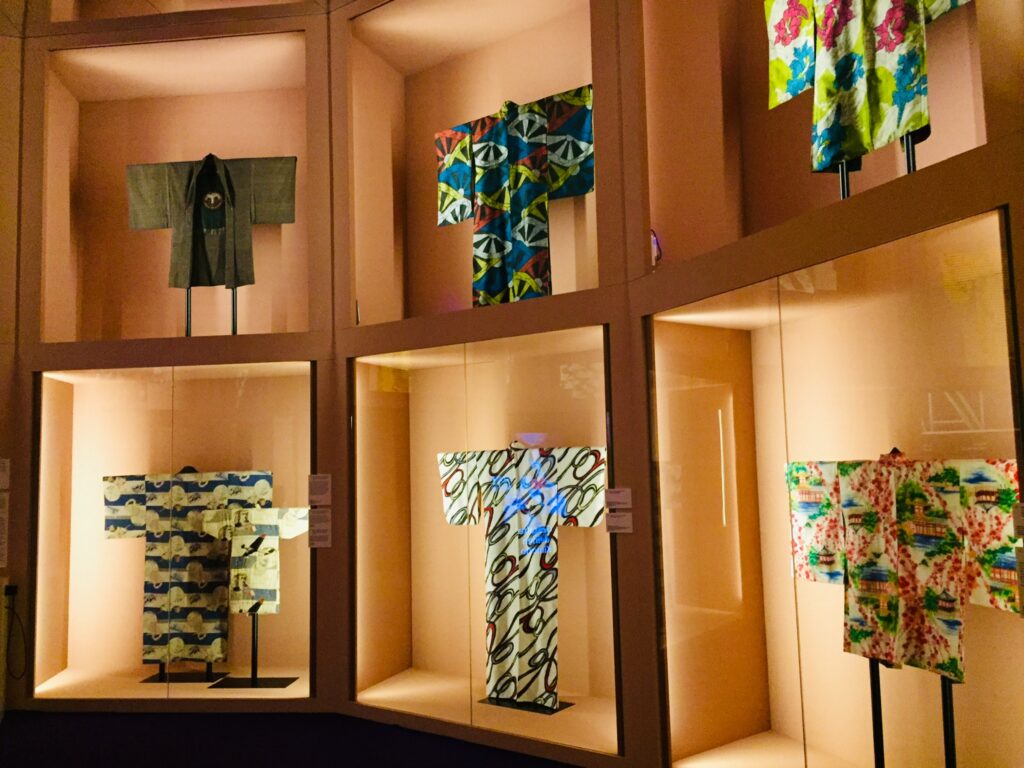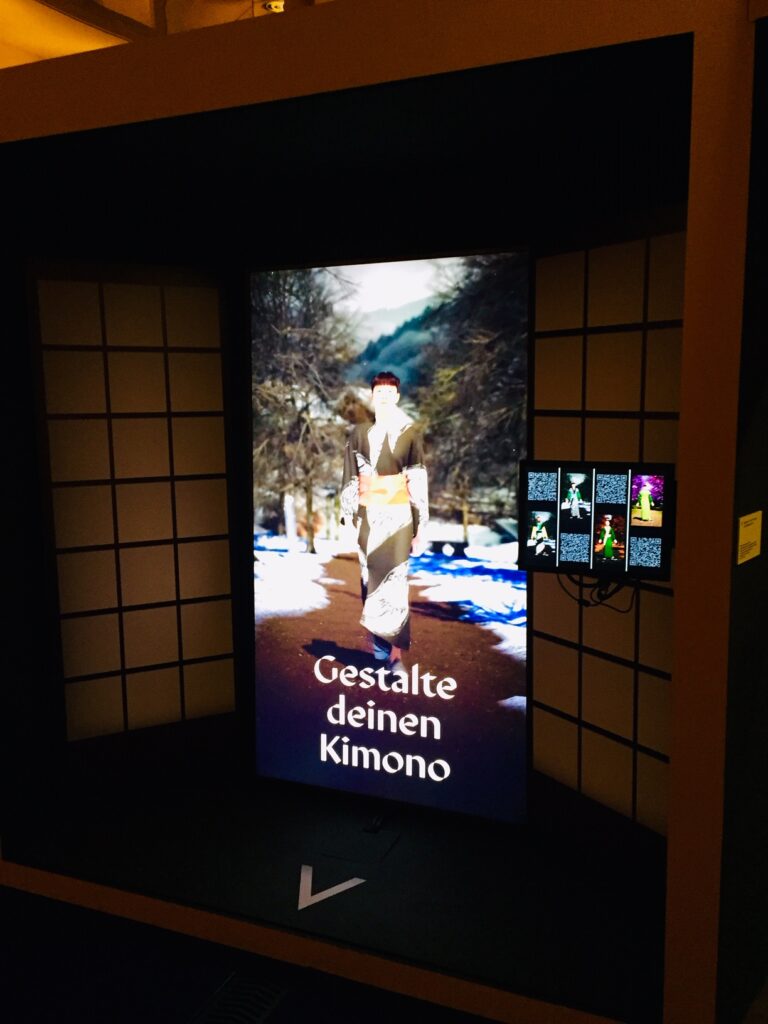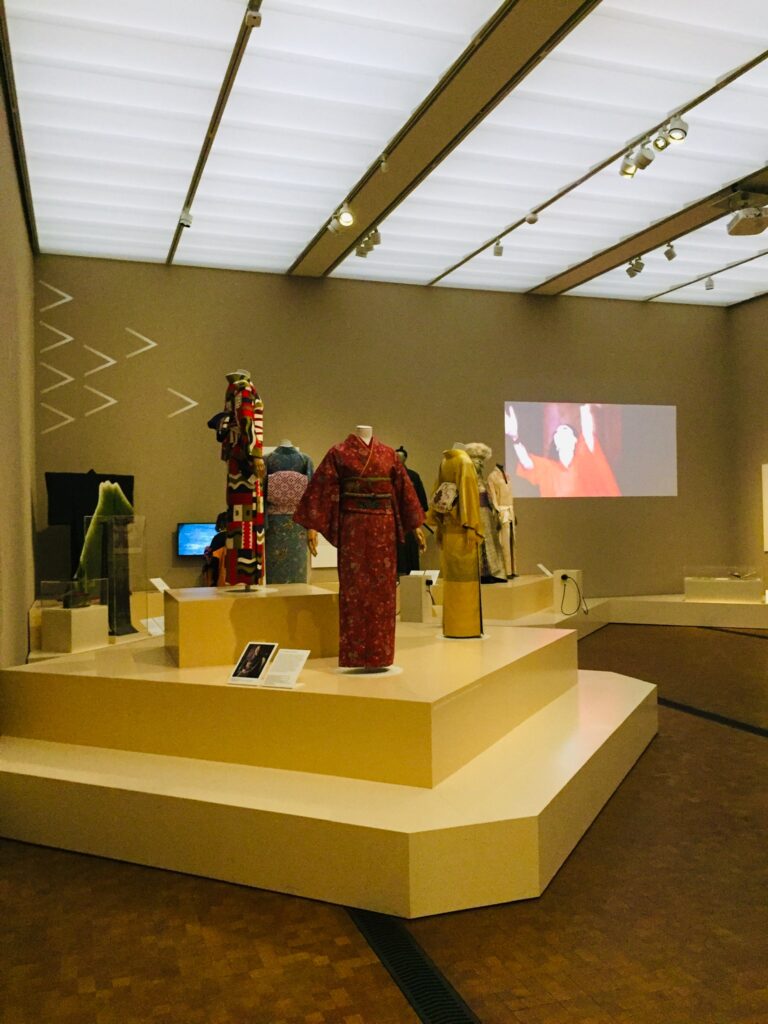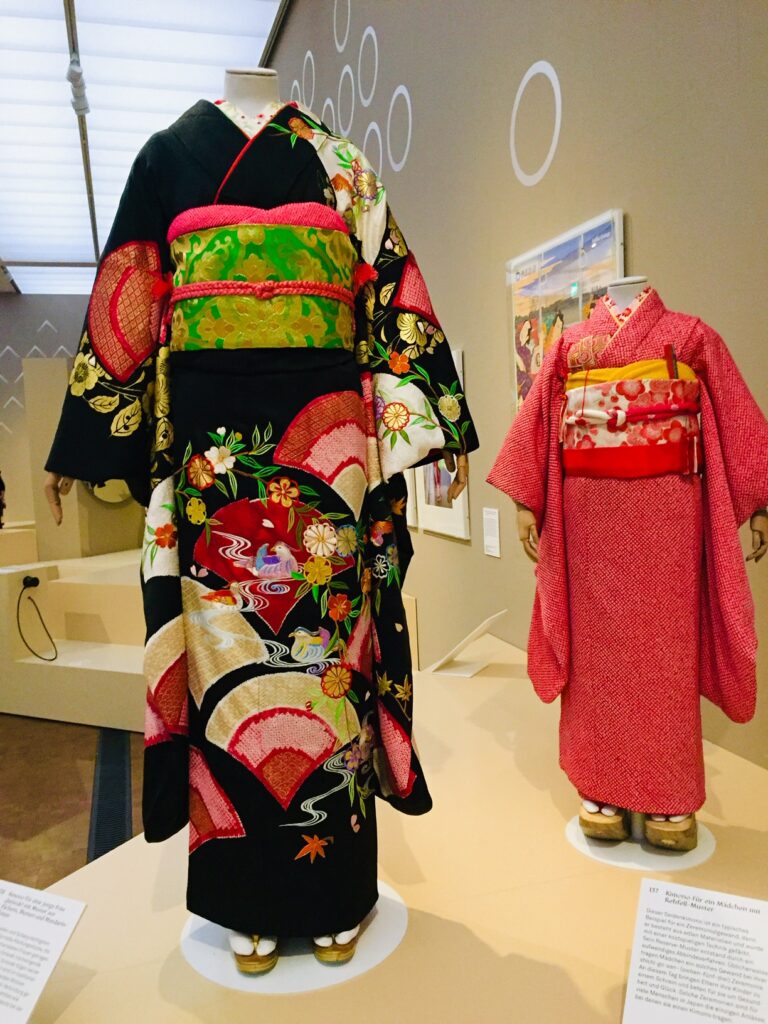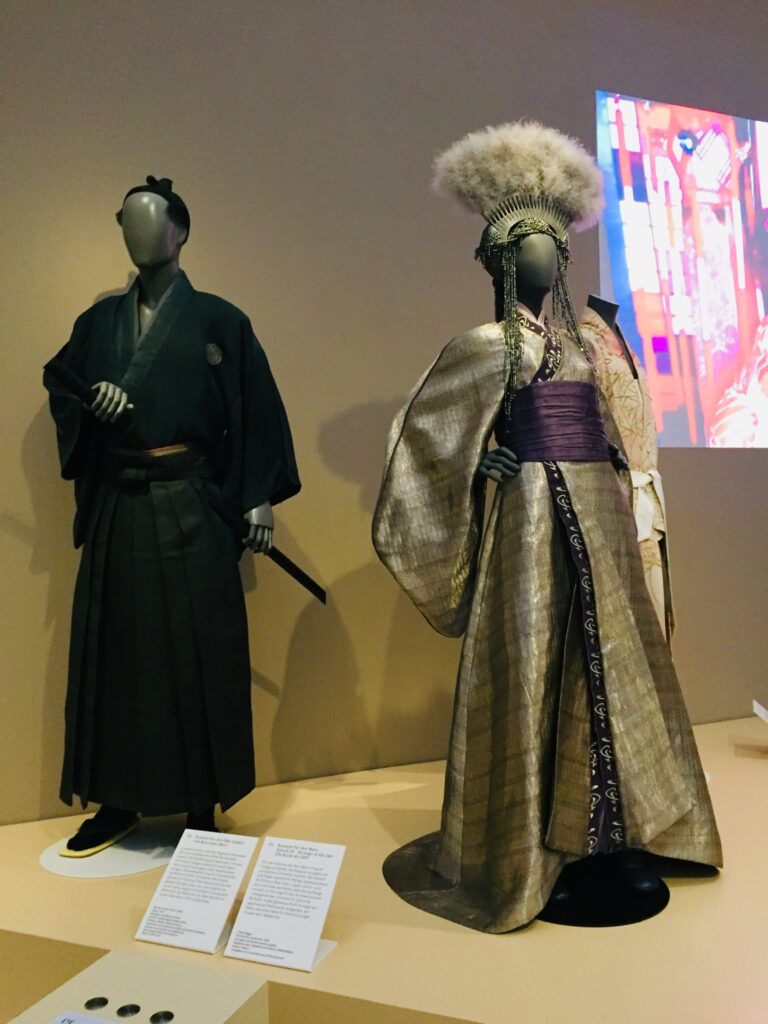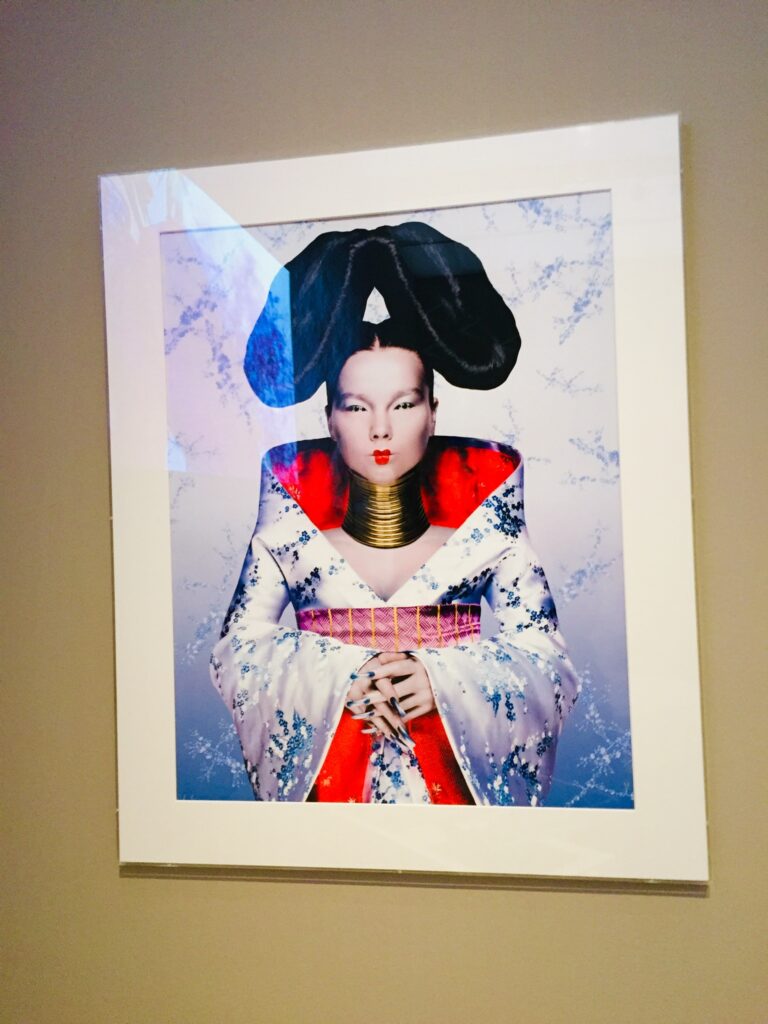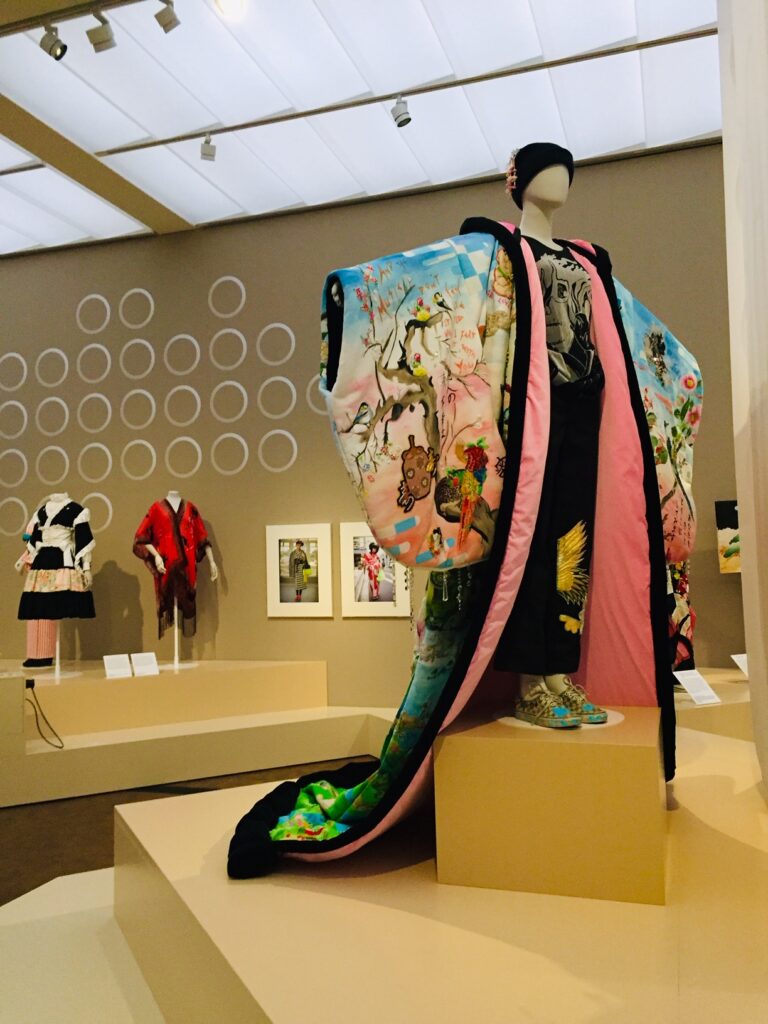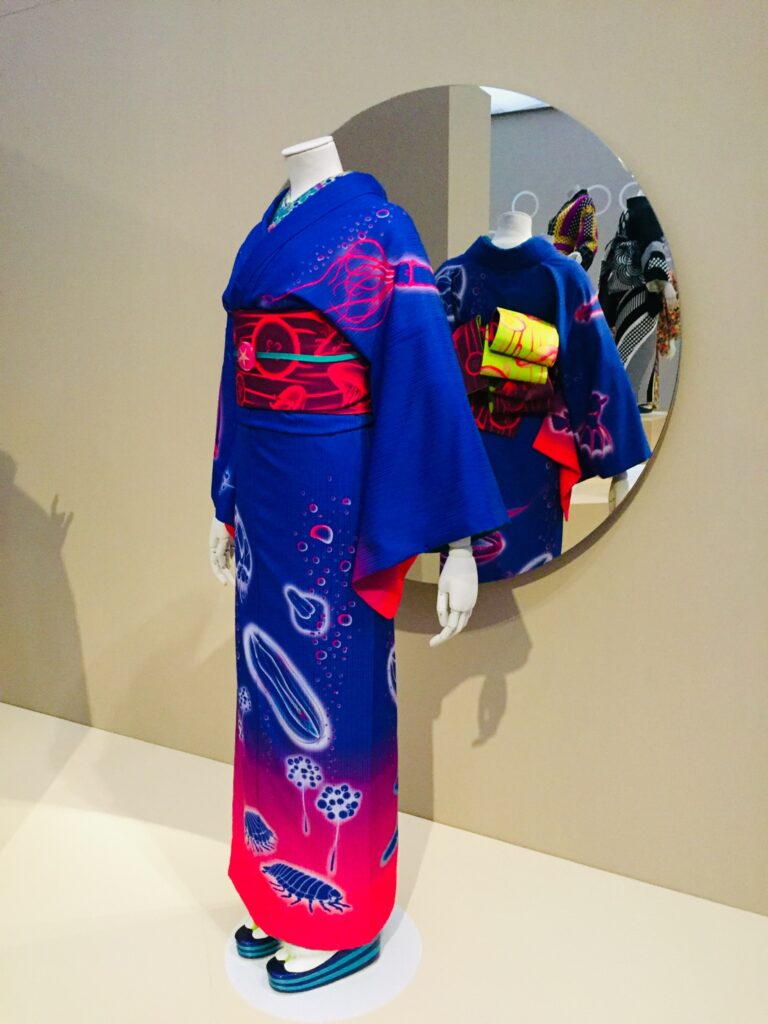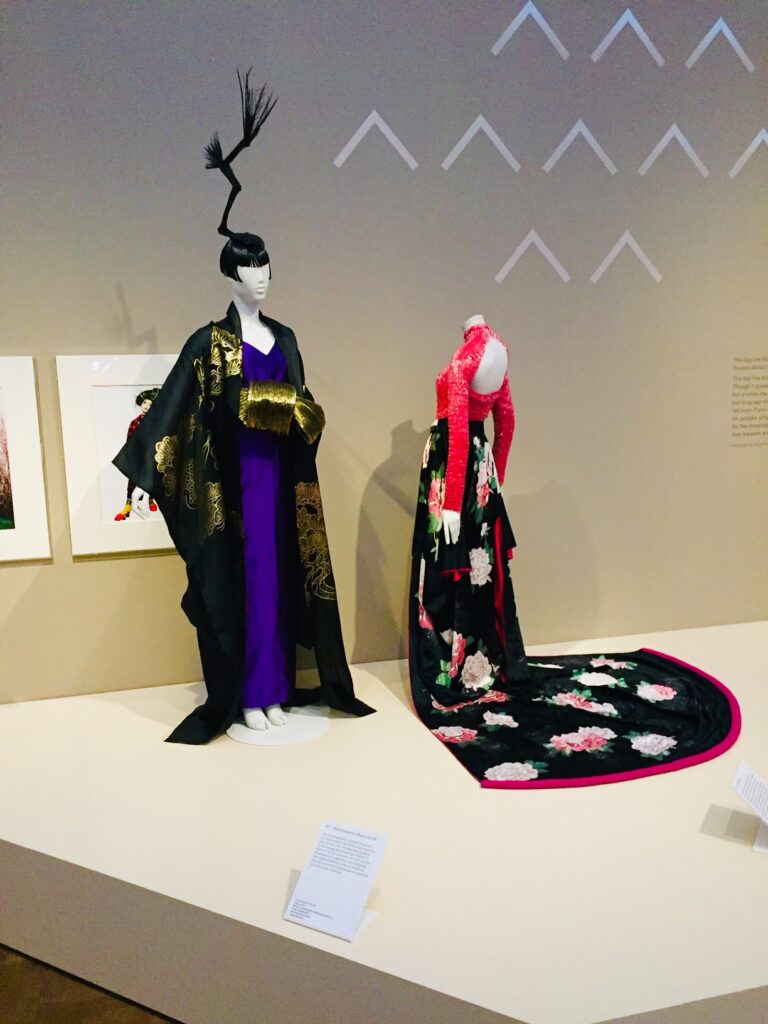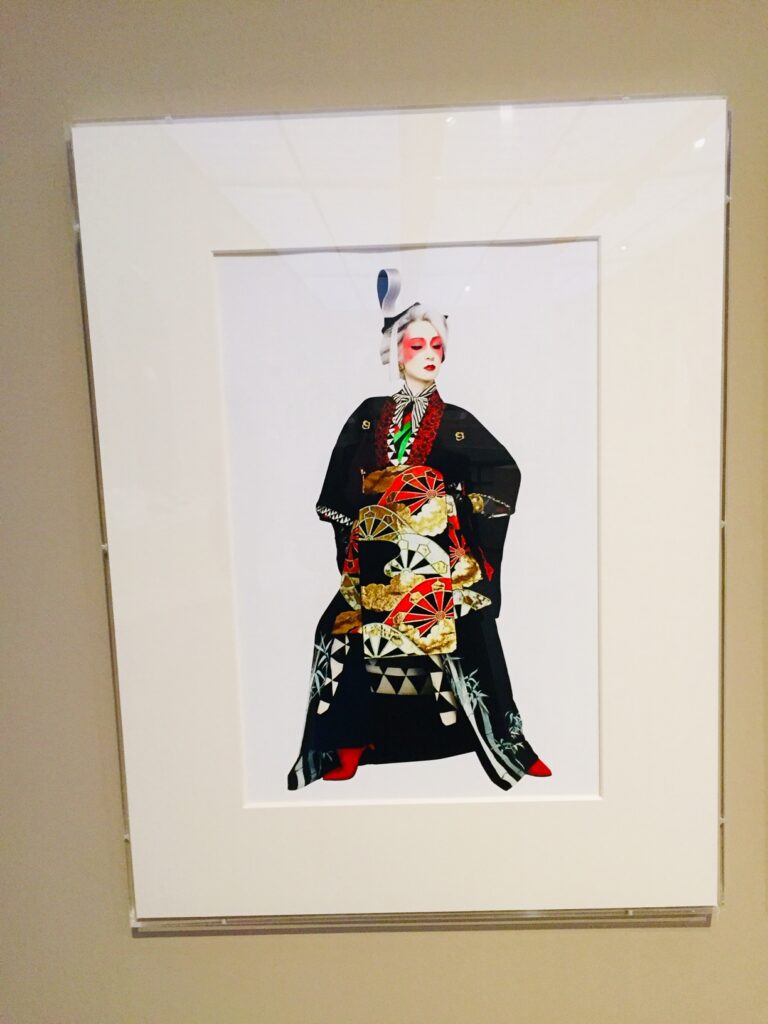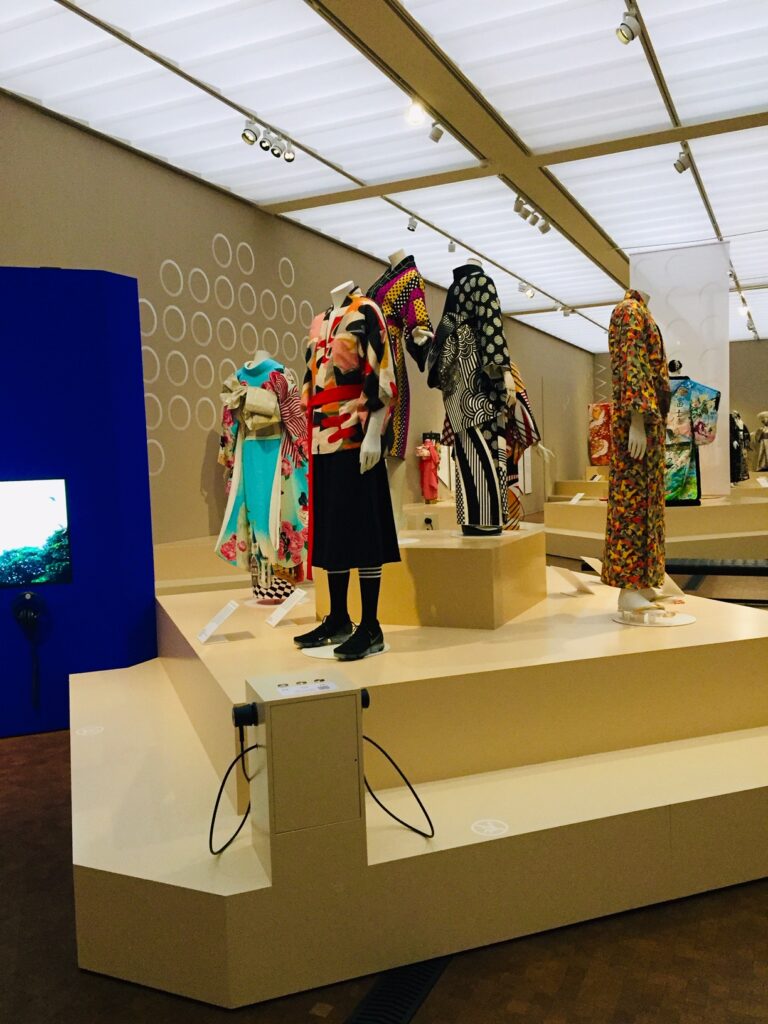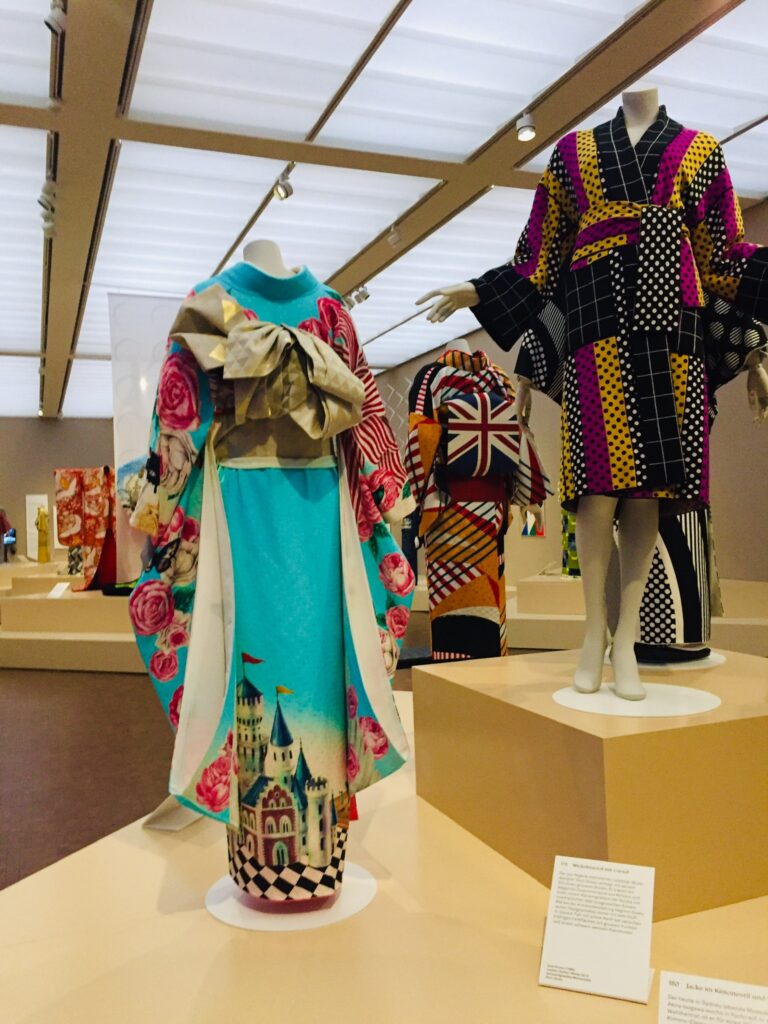The kimono is an iconic piece of clothing. In Japan it is revered as an embodiment of its own culture and an expression of a specific sensibility, while people from other countries perceive it as an exotic piece of clothing. Its symbolic status and the fact that its form has remained unchanged over centuries leads to the perception of a certain timelessness – although shaped by tradition. The exhibition counters this impression by presenting the diversity of a fashionable garment that is constantly being reinvented in Japan and elsewhere.
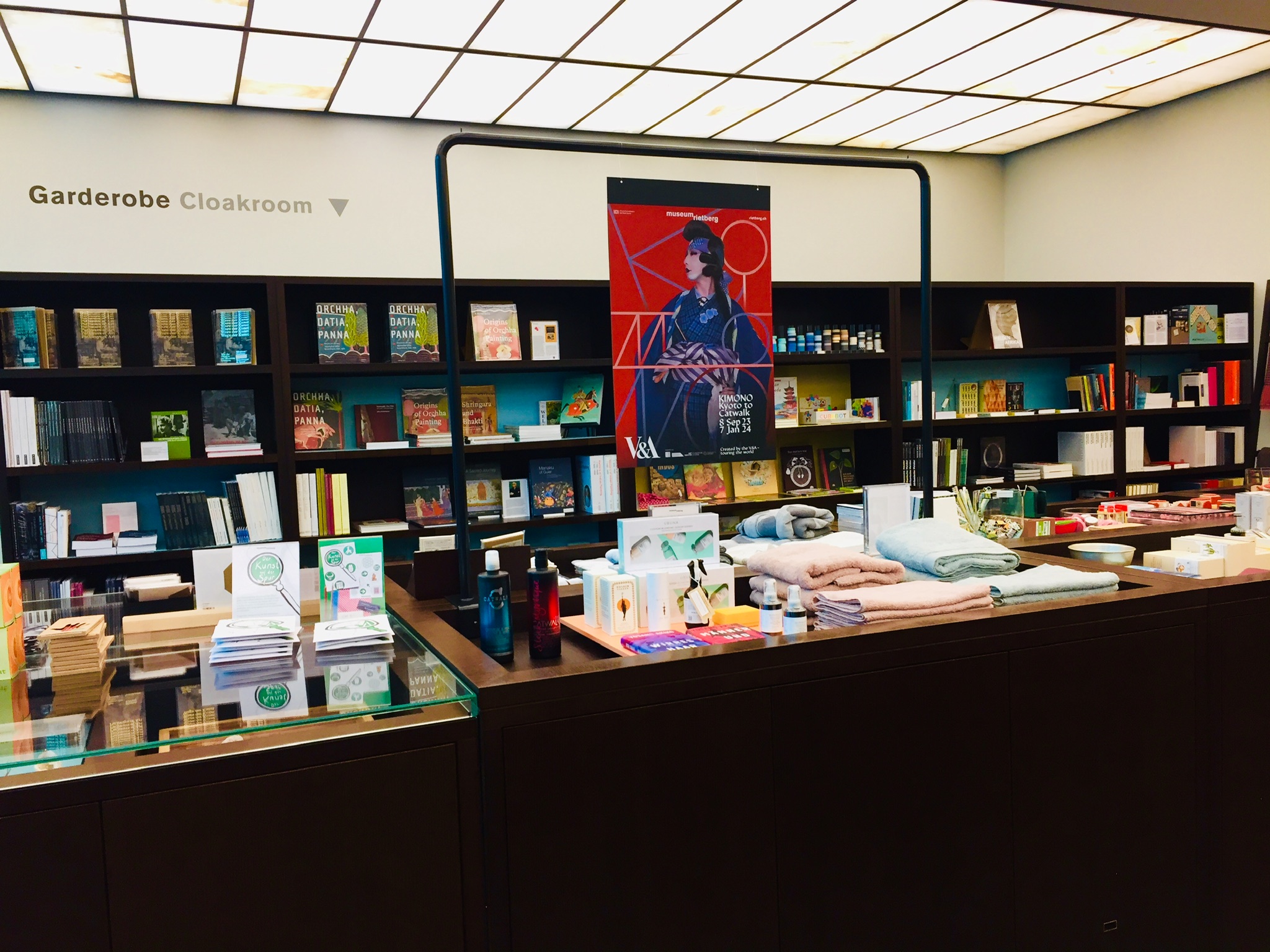
Literally translated, kimono means something like “a thing to wear”. The history of this garment goes back over a thousand years. From 1615, with the beginning of the Edo period, the kimono was worn by women, men and children of all classes. In the mid-17th century, Kyoto, the center of luxury textile production, developed its own fashion culture.
The kimono’s straight cut created a flat surface that served as the perfect canvas for detailed patterning, with motifs often referencing other artistic genres such as literature and poetry. The art of dressing fashionably became more and more sophisticated. Important concepts of Japanese aesthetics shape the tradition of the kimono to this day: elegant simplicity, enchanting splendor or reserved elegance. The enthusiasm generated by the latest creations and the seductive beauty that emanated from those who wore them made the kimono an important motif in painting and graphic art.
In the mid-17th century, kimonos were first exported to Europe, where their shape and decoration had a direct influence on clothing styles. The global influence of the kimono can still be felt on the world’s catwalks today, while the garment is experiencing a dynamic artistic and stylistic revival in Japan.

